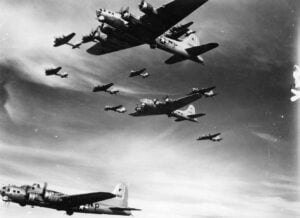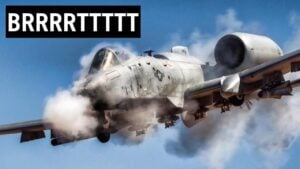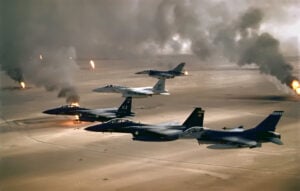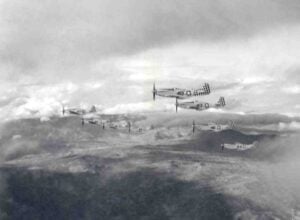What If the A-1 Skyraider Had Entered WWII? The Plane That Came Too Late

Photo by U.S. Navy, Public domain, via Wikimedia Commons
December 1944 marked one of the most intense periods of the Pacific War. The United States had captured islands one after another, including Saipan and Guam, but each victory came at staggering cost. Carrier decks were crowded with pilots whispering about a new aircraft, one capable of carrying heavy loads of bombs, flying long distances, and surviving against the growing kamikaze threat. Engineers at the Douglas Aircraft Company, led by Edward Heineman, were developing what would become the A-1 Skyraider, known at first as the XBT2D1. By the time it was ready for testing in early 1945, the war was already nearing its violent conclusion. Yet imagining this aircraft arriving months earlier reveals just how dramatically it could have reshaped the fight.
The Skyraider emerged from necessity. By mid-1944, the Navy’s dive bombers, including the SBD Dauntless and SB2C Helldiver, were becoming outdated. Carrier air wings carried too many specialized aircraft, making operations complicated. The Navy wanted a single plane that could handle multiple tasks—dive bombing, torpedo strikes, ground attack, and escort missions. Heineman’s team worked tirelessly in El Segundo, California, redesigning blueprints and creating what they called a pilot’s airplane. The Skyraider combined simplicity, durability, and power. Its Wright R-3350 Duplex-Cyclone engine produced 2,700 horsepower, and its wide wings could carry over 8,000 pounds of bombs, more than some heavy bombers managed on long missions.
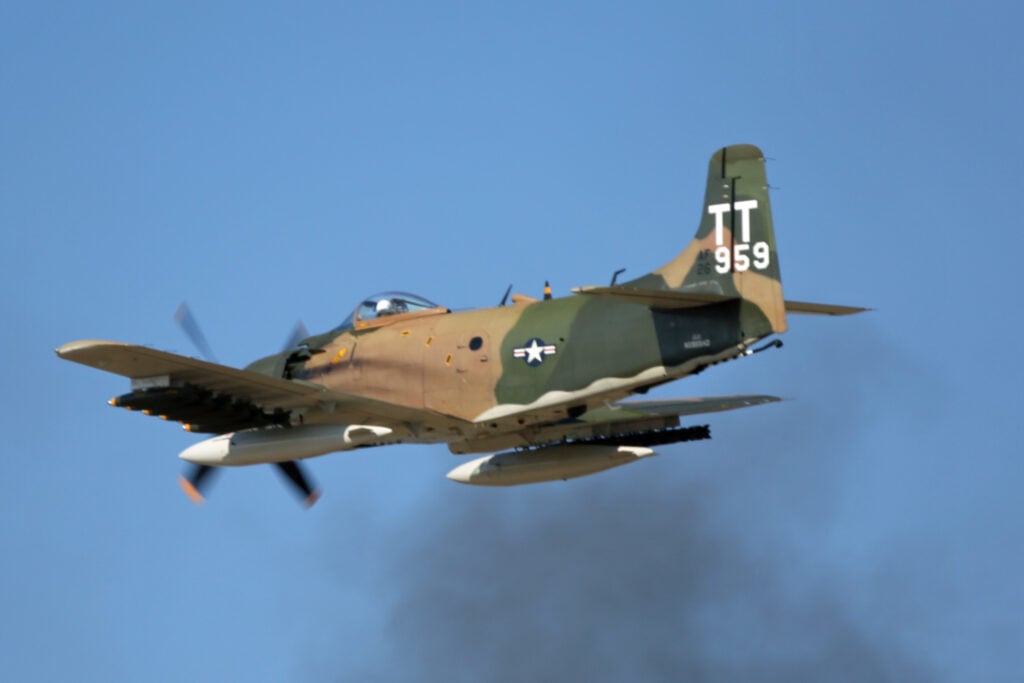
Design and Early Testing
By March 1945, the prototype was ready for its first flight, though in this alternate timeline, testing accelerates to December 1944. Test pilot Leverne Brown lifts the aircraft into the sky over California. Its engine produces a low, steady roar unlike anything seen on carrier decks. Within weeks, Navy officials recognize its potential. The Skyraider promises longer endurance, heavy payload, and maneuverability that could match the growing demands of late-stage Pacific combat. Commanders envision the aircraft replacing several existing models, simplifying operations while increasing striking power.
In the final months of 1944 and early 1945, kamikaze attacks posed a deadly threat to American ships. Aircraft carriers were frequently targeted, and every raid came with heavy losses. The Skyraider is tested aboard the USS Enterprise near Ulithi Atoll. Initially, pilots are wary. Its size and appearance seem cumbersome, yet when airborne, the aircraft proves responsive even under full bomb loads. With external tanks, it can remain in the air for nine hours, almost double the endurance of a Corsair. Engineers equip the plane with armor, reinforced rocket mounts, and train crews in dive-bombing and skip-bombing techniques, preparing it for the intense battles ahead.

Combat Over Okinawa
By April 1945, the Skyraider joins carrier air group six aboard the USS Bunker Hill just in time for the Battle of Okinawa. The skies are chaotic, with hundreds of kamikaze aircraft attacking in waves. On April 30th, the first combat sortie targets airfields on Kyushu, Japan. Lieutenant Robert Clemens, a calm and experienced pilot from Kansas, leads four Skyraiders. Each plane carries four 500-pound bombs and eight rockets. The attacks are precise, destroying runways, fuel depots, and aircraft revetments. Enemy defenders overestimate the number of attacking aircraft, amplifying the psychological impact. The Skyraider’s combination of endurance, firepower, and precision demonstrates that a single piston-engine aircraft can perform missions that previously required multiple types.
Over the following weeks, Skyraiders conduct strikes against bridges, trains, and convoys. Japanese troops begin referring to the aircraft as Bakudan Oni, or “bomb demon,” a reflection of its overwhelming presence. When the Bunker Hill is hit by kamikazes on May 11th, two Skyraiders survive the explosions, showcasing their durability. As plans for Operation Downfall, the invasion of Japan, move forward, the Skyraider becomes essential in pre-invasion bombing missions. Pilots fly low-level attacks under heavy fire, destroying cargo vessels and coastal batteries, and returning to carriers even with critical damage. Its slow, controlled attack runs allow for accurate strikes and extended support for ground forces.

Alternate Legacy
By late 1945, the Skyraider’s operations support the invasion of Kyushu, providing air cover, pinpoint strikes, and extended patrols that could reduce casualties and accelerate the collapse of Japanese defenses. Military historians later speculate that had the Skyraider entered the war even months earlier, the conflict in the Pacific might have ended sooner. In reality, the first production models were completed just as the war ended, delaying their combat debut until Korea and Vietnam. Yet the design bridged the gap between piston engines and jets, combining the firepower of a bomber with the agility of a fighter. It exemplified lessons learned from earlier combat and set the stage for the future of naval aviation.














